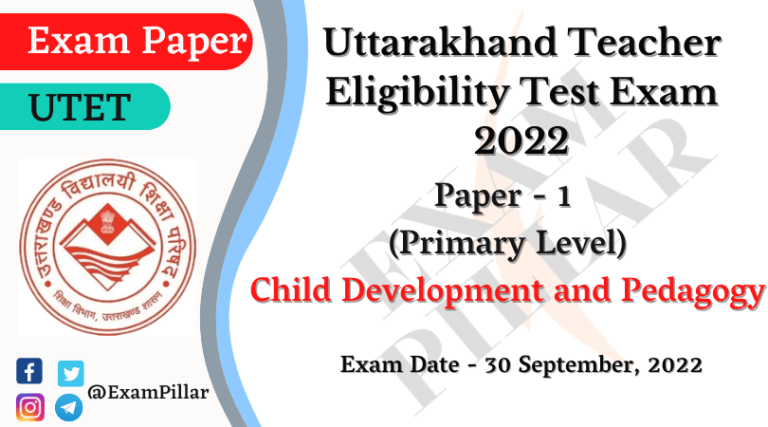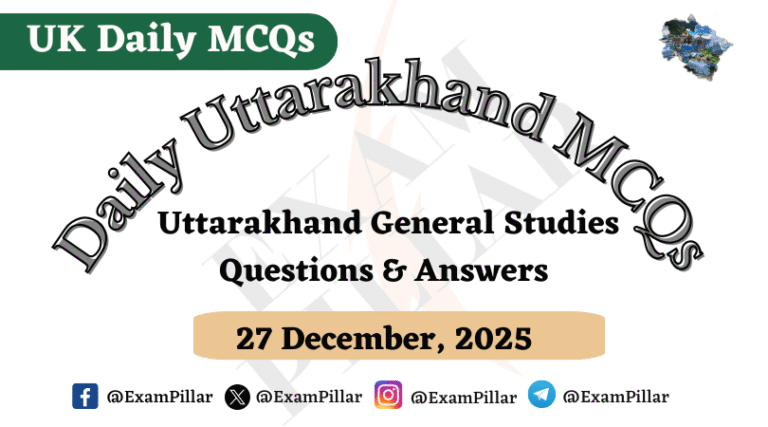The extension of Uttarakhand on the globe is located between 28º43 ‘to 31º27’ in the north latitude and 77º34 ‘to 81º02’ in the east longitude. The latitudinal and longitudinal expanses of Uttarakhand are 2º44′ and 3º28′ respectively. Its shape is almost rectangular, and the length from east to west of the state is 385 kilometers and its width from north to south is 320 K.M..
The total area of the state of Uttarakhand is 53,483 K.M.2, which is about 1.69% of the total area of the country. It is the 18th state of India in terms of area, 86.07% of the total area of the state (46035 KM2) is mountainous and 13.93% of the area (7448 sq km) is plain.
Uttarakhand has Nepal in the east, Himachal Pradesh in the west, Himalayas and Tibet in the north and Uttar Pradesh in the south. 3 districts of Uttarakhand, Pithoragarh, Champawat and Udhamsingh Nagar, share their border with Nepal. And 3 districts Pithoragarh, Chamoli and Uttarkashi share the international border of Tibet (China). 5 districts Udham Singh Nagar, Nainital, Dehradun, Pauri Garhwal and Haridwar share the Uttar Pradesh border and 2 districts Dehradun and Uttarkashi touch the border of Himachal Pradesh.
Pithoragarh, the easternmost district of Uttarakhand state, Western District Dehradun, The northern district is Uttarkashi and the southern district is Udham Singh Nagar. The border of Pauri district touches 7 districts of the state, Which includes Nainital, Almora, Chamoli, Rudraprayag, Tehri, Dehradun and Haridwar. Chamoli and Almora touch the boundaries of 6-6 districts of the state.
Only 4 districts of the state, Almora, Rudraprayag, Bageshwar, Tehri, do not touch the border of any state and country. Pithoragarh is the district with the longest international border.
Geographical Division of Uttarakhand
Geographical Division of Uttarakhand: On the basis of surface configuration, Uttarakhand is divided into 8 geographical regions.
- Trans Himalayan Region
- Greater (Higher) Himalayan region
- Small (Central) Himalayan Region
- Doon Area
- Shivalik Area
- Bhabar Area
- Lowland (Tarai) Area
- Gangetic Plains
Trans Himalayan Region
Some parts of this region are under the control of India and Tibet. Height of this area are 2500 meters to 3500 meters and Its widths range from 20 to 30 kilometers. The mountain ranges of this region are called the Jaxar Range. Passes like Mana, Niti, Lipulekh, Kingery-Bingri, etc. are in this area.
Greater (Higher) Himalayan Region
It is located to the south of the Trans Himalayan region, This mountain range with the highest peaks is called Maha or Main Himalaya. The height of this mountain range in Uttarakhand is 4500 to 7817 m. And its width ranges from 15 to 30 kilometers. The range is spread from east to west in 6 districts of the state (Pithoragarh, Uttarkashi, Tehri Garhwal, Rudraprayag, Chamoli and Bageshwar). In this region, Bhagirathi, Alaknanda, Dhauli, Gori Ganga etc. are the origin of rivers and also major peaks like Nanda Devi, Panchachuli, Doonagiri etc. are located.
Small (Central) Himalayan Region
This region is situated to the south of the region of the Greater Himalayas, It is spread from east to west in 9 districts of the state (eastern part of Champawat, Nainital, Almora, Chamoli, Pauri Garhwal, Rudraprayag, Tehri Garhwal, Uttarkashi and Dehradun). The Height of this area 1200 m to 4500 m and its width ranges from 70 to 100 km.
The central Himalayan region is formed by dunes and metamorphic rocks. Mineral elements like copper, graphite, gypsum and magneside are found in this area. The rivers Saryu, Western Ramganga, Ladhiya etc. originate from this Himalayas and many lakes are found in this area.
Temperate tropical evergreen type of angular dense forests are found in this region. Trees of Oak, Kharas, Cedar, Sal, Chid etc. are found in large quantities in these forests. Small grasslands are found in this area called Bugyal and Pyar.
Doon Area
It is the area between Shivalik and Central Himalayas. Whose height ranges from 350 meters to 750 meters and width from 24 to 32 kilometers. Dehradun, Kothari, Chaukham, Kota, Pachhwa etc. are the major Duns of the state. Agriculture is done in these areas and the population density here is high due to favorable conditions for human life.
Shivalik Area
The hill immediately north of the Bhabar region is called the external Himalayas or Shivalik. This mountain range is located at the outermost (southern) end of the Himalayas. These areas are in 7 districts of the state (Southern Dehradun, North Haridwar, Medial Pauri, Southern Almora, Medial Nainital and Southern Champawat). The height of this area ranges from 700 m to 1200 m and the width ranges from 10 to 20 km. This range is the most recent part of the Himalayas.
The major flora of this region are rosewood, sal, burans, pines, bamboo, etc and the major minerals are sand, marble, gypsum, phosphate etc.
Bhabar Area
Bhabar in the north of the Terai region and the south part of the Shivalik region. Its width is 10 to 12 kilometers. and it was spread East from Champawat to South from Dehradun. This area is rugged and clayey pebbles and coarse sand.
Lowland (Tarai) Area
In Udham Singh Nagar, Haridwar, the Gangetic plain, Pauri Garhwal and some parts of Nainital are called Tarai. Its width is from 20 to 30 km. The land in the Tarai region is formed by fine-grained sediments.
These areas are different from the plains due to the land being marshy. Paddy and sugarcane are cultivated in this area due to excess water, Apart from this, wheat, potatoes are also cultivated here and wells are found in this area.
Gangetic Plains
Most of southern Haridwar is part of the flat Gangetic plain. The region is composed of fine particulate sediments brought by the Ganges. This area is very fertile, with most of the sugarcane, wheat, and paddy crops in this region.
| Uttarakhand Study Material in Hindi Language Click Here |
| Uttarakhand UKPSC Previous Year Exam Paper Click Here |
| Uttarakhand UKSSSC Previous Year Exam Paper Click Here |
| Uttarakhand Police Previous Year Exam Paper Click Here |




Leave a Reply